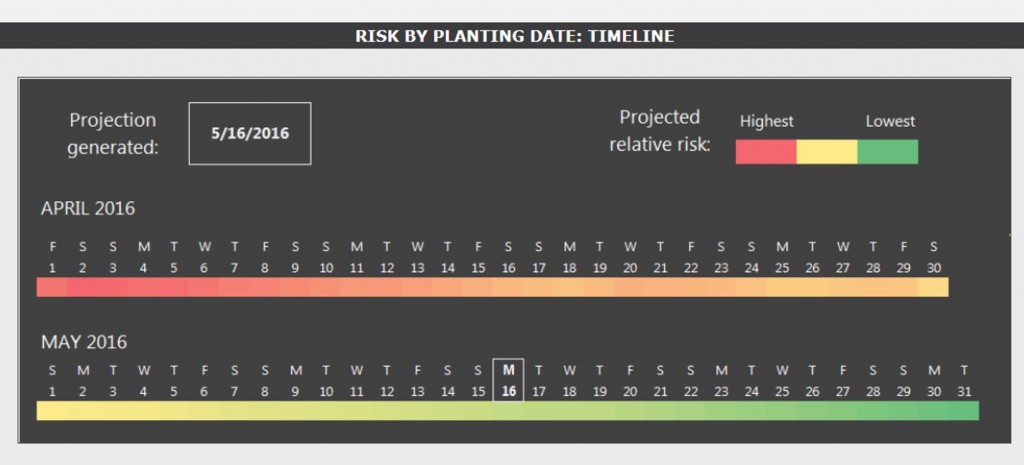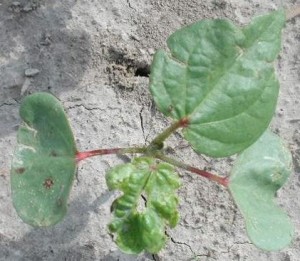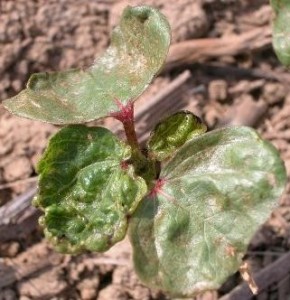By Dominic Reisig

Thrips risk forecast for Rocky Mount.
When did you plant? On average, cotton planted after the 17 of May is safe from thrips. The earlier you plant, the more likely you are to suffer from thrips. This varies from year to year, of course. During 2014 and 2015, cotton planted mid-May was hammered by thrips. This is because the two most critical factors for thrips injury in cotton are the “thrips flight” and how fast the cotton grows (cooler conditions mean slower grow off for the cotton). Last year’s thrips flight just happened to be timed so that our cotton planted during mid-May was at severe risk. A model has been developed to predict risk to cotton by Dr. Tom Chappell, at NCSU. His model projects the development of thrips and cotton with weather data. As you can see from the above figure, he predicts that cotton planted after mid-May will be less at risk for thrips.

Cotton that received this amount of injury or less would likely not be worth a spray.
What is the growth stage of the cotton? I cannot stress the importance of this point. Cotton is most susceptible by far before the two-leaf stage. Cotton will take a yield hit up to the five leaf stage, but sprays at the four and five-leaf stage are typically for revenge, rather than yield. Thrips will delay maturity more often than they will suck yield. We need to focus on managing earliness to get cotton out before frost, tropical systems, avoid plant bugs, etc. You can tank mix your insecticide with a post herbicide application. The decision you will likely make is whether to be timely for the weeds or the thrips. Check out this article written by Guy Collins for a great treatment of this.

Cotton that received this amount of injury would have benefited economically from a spray. At this point, a lot of the damage has already been done.
What are your thrips numbers? Our threshold is two nymphs per seedling at or before the first leaf stage. Note the importance of spraying your cotton early.
What is your insecticidal seed treatment? Tobacco thrips are now resistant to all neonicotinoid insecticides in our state, although the resistance levels vary among geography. So you can expect variable performance out of any neonoicotinoid chemistry. They still work well, in many cases, and provide value even when there is resistance (see results from regional SE thrips publication). Bottom line, keep an eye out for how seed treatments are performing and be ready to jump in with a timely spray, if needed.
Did you use imidacloprid in-furrow (Admire or Velum)? Our recommendation during 2013-2015 was to use the highest labeled rate of imidacloprid (Admire Pro) in-furrow overtop of insecticide-treated seed. The rationale for this is that, when the imidacloprid was applied correctly in replicated tests, a foliar spray for thrips was not necessary. Even though thrips were neonicotinoid resistant in 2014, the cotton seemed to take up enough insecticide with this shot in the furrow to overcome the thrips. We had some field failures of this combination during 2015 in some spots. It looked great in other spots (see results from regional SE thrips publication). Remember, if the application method is not correct (not applied directly in-furrow with good insecticide to seed contact), you will likely need to spray. We still recommend supplementing seed treatments with in-furrows, especially during high-risk planting situations. Based on the forecast for planting at Rocky Mount (above), any cotton planted now could forego the in-furrow.
Source:ncsu.edu